Please enjoy my notes from Day 5 of the 2016 MTNA conference in San Antonio, Texas! Click here to go back to Day 4.
On Wednesday, the final day of the conference, Susan Hong and I began our morning at Bakery Lorraine to enjoy coffee and some baked goods. I’m so thankful she invited me to stay with her during the conference!
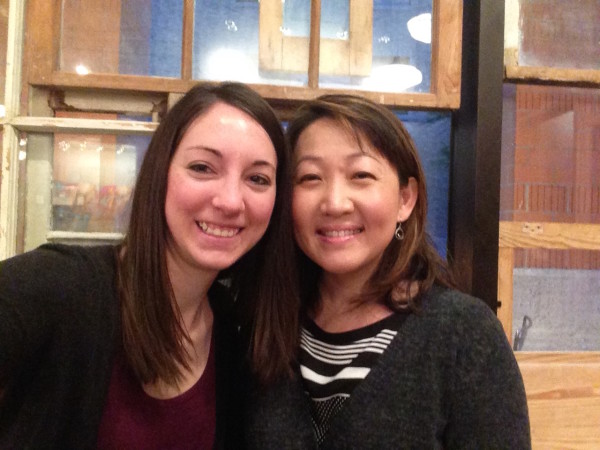
We attended two more sessions before MTNA 2016 came to a close.
8:00am Extended Piano Techniques for Children: Reading and Playing the Language of Our Time, by Kevin Richmond
The last day of the conference often offers some of the best sessions. Kevin Richmond gave an engaging and informative session about six types of extended techniques used in music written for children. Accordingly, he also discussed the various forms of non-conventional notation that composers have come up with to indicate each type of extended technique.
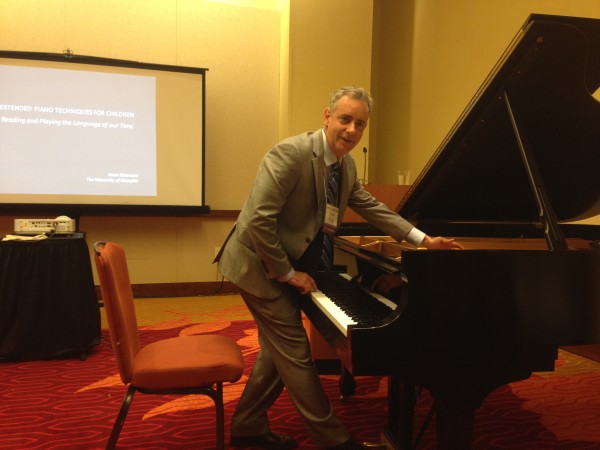
1. Clusters. There are a few different ways that clusters are notated. The notation indicates three things: the rhythm value, the pitch range, and the quality (meaning, black keys only, white keys only, or mixed). Examples: Cowell’s Exultation and Chatman’s “Freak-Out”.
2. Indeterminacy (aka, aleatoric or chance music). The directions in this type of music will indicate how many seconds to wait between each box and whether the boxes are to be repeated or not. Example: Serocki, “A Piacere” is an example of choosing between three boxes of notation on the page.
3. Unmeasured Notation. Examples: Feldman’s “Last Pieces”, movement 1. Gubaiduline, “Toccata-Troncata” requires the listening to the decaying end of the sound. Bialas’s “Marsch”. Chatman’s “Daydream” indicates the number of seconds that each pitch is held. Also: “Too Tired for Anything” from 70 Keyboard Adventures.
4. Sympathetic vibrations occur when we silently hold down certain keys and then play in another area of the piano or knock on the piano to cause. The notation used is diamond shaped note heads, or boxes around the chord. Examples: Papp’s “Forte-Piano” and Ferrell “The Forest Speaks”.
5. Inside the piano, for example, strumming the strings. Noona’s “The Princess and the Troubador” requires strumming. Kevin suggested having the student use a pencil’s eraser or a chopstick to help them be able to reach inside the piano.
It was so fun to hear the musical examples Kevin presented! It’s important to expose students to modern and contemporary music, and they are bound to enjoy this kind of exploration with sound.
9:15am Teach Composition? Oh Yes You Can! by Amy Immerman
Amy Immerman talked about how to help students to compose. She began by encouraging us that we teachers do not need to have a specialized background in composition to be able to help our students compose.

Amy suggested that composition lessons can be offered as an additional year-round studio offering, or as a special summer term. Amy requires that students must have gone through at least the Primer and next level of a piano method before they can take composition lessons. Amy charges the same hourly rate as her private lessons. In the summer package, tuition is advertised as including materials and five copies of the final composition.
Materials: clipboard, blank staff paper, pencil, eraser, piano/keyboard, and computer/notation software (optional). Students should notate the music themselves on staff paper. Later, the piece can be notated in computer software if desired (MuscScore, Noteflight, Finale, or Sibelius). Amy’s rule of thumb is: always compose music that is within the student’s playing ability.
Step 1: Ask the student whether the composition will have words, because the lyrics can help determine the rhythm and meter. If the piece will not have lyrics, discuss mood with the student or create a story. Ask: is it going to be happy/sad, scary, fast/slow, smooth/bouncy, use pedal, etc.?
There are two types of students when it comes to composition: intuitive vs. non-intuitive students. Intuitive students will often already have a piece of music mostly formed, and will need help notating it.
Non-intuitive students often need much encouragement and help to start a piece. Ask the student to noodle on the piano with you (perhaps try improvising with the blues scale, marked with blue highlighter tape, accompanied by a bass line of four descending notes). Once you have a great motive, use it a few times in the piece. Once you have 2 or 3 motives, choose a couple of composition techniques to get mileage: repetition, sequence, inversion, retrograde, rhythmic shift, or fragmentation.
Create an accompaniment. Suggest ideas: Alberti bass, broken chords, solid chords, open fifths, root-fifth-root, broken octaves, etc.. Generally, stick to 8 to 16 measure sections, with a simple structure (such has ABA).
Finishing touches: slurs, dynamics, fingering, etc.. Copyright is automatically secured when a work is created, according to the law. You can register it if desired, but it is not necessary. Include the copyright information at the bottom of the sheet music.
Print the piece professionally on 11”x17” card stock (#90). Have the student create artwork for the cover. If there is room on the back of the sheet music, place a composer bio and photo. Be sure to display a copy of the composition in your studio. Students and parents will be so proud!
Amy announced at the end of her session that her slides are available for viewing online here.
After the final MTNA session, Susan Hong and I joined up with Libby Castillo (another San Antonio area teacher) to have a delicious lunch at The Granary. We enjoyed the Wednesday special: pulled pork on a pretzel bun.
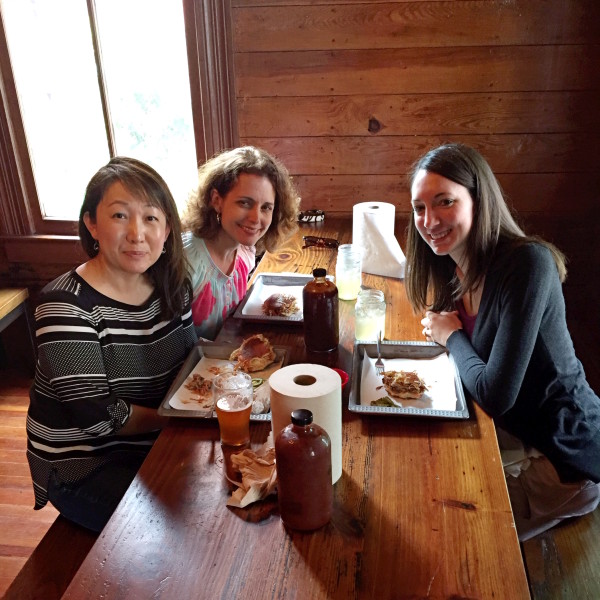
Afterwards, we treated ourselves to ice cream at the Lick. So delicious!
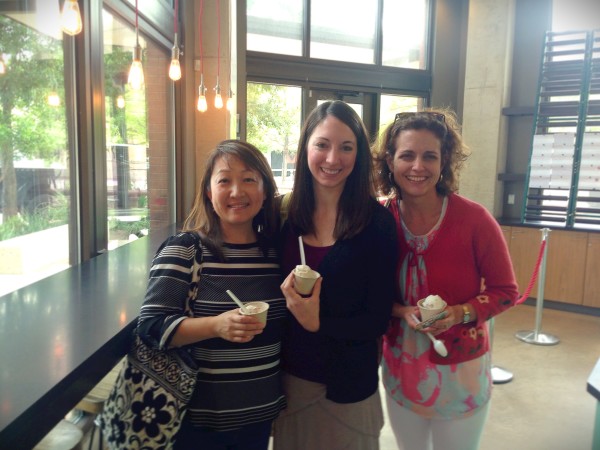
The 2016 MTNA conference was a wonderful experience. There were so many great sessions to choose from (it is so hard to decide between all of the options at a given time!) and I learned so much. San Antonio is such a beautiful, walkable city, which definitely added to the conference experience. Besides that, having the opportunity to stay and spend so much time with Susan Hong and Amy Chaplin made the trip that much more memorable.
Back home in Ohio this week, I’m feeling refreshed with some new ideas and strategies to use with my students. My teaching batteries have been re-charged!
Next year’s MTNA 2017 conference will take place in Baltimore, Maryland. I’m already planning to start saving so I can attend again next year. I can’t wait.
As always, thanks for reading my notes.


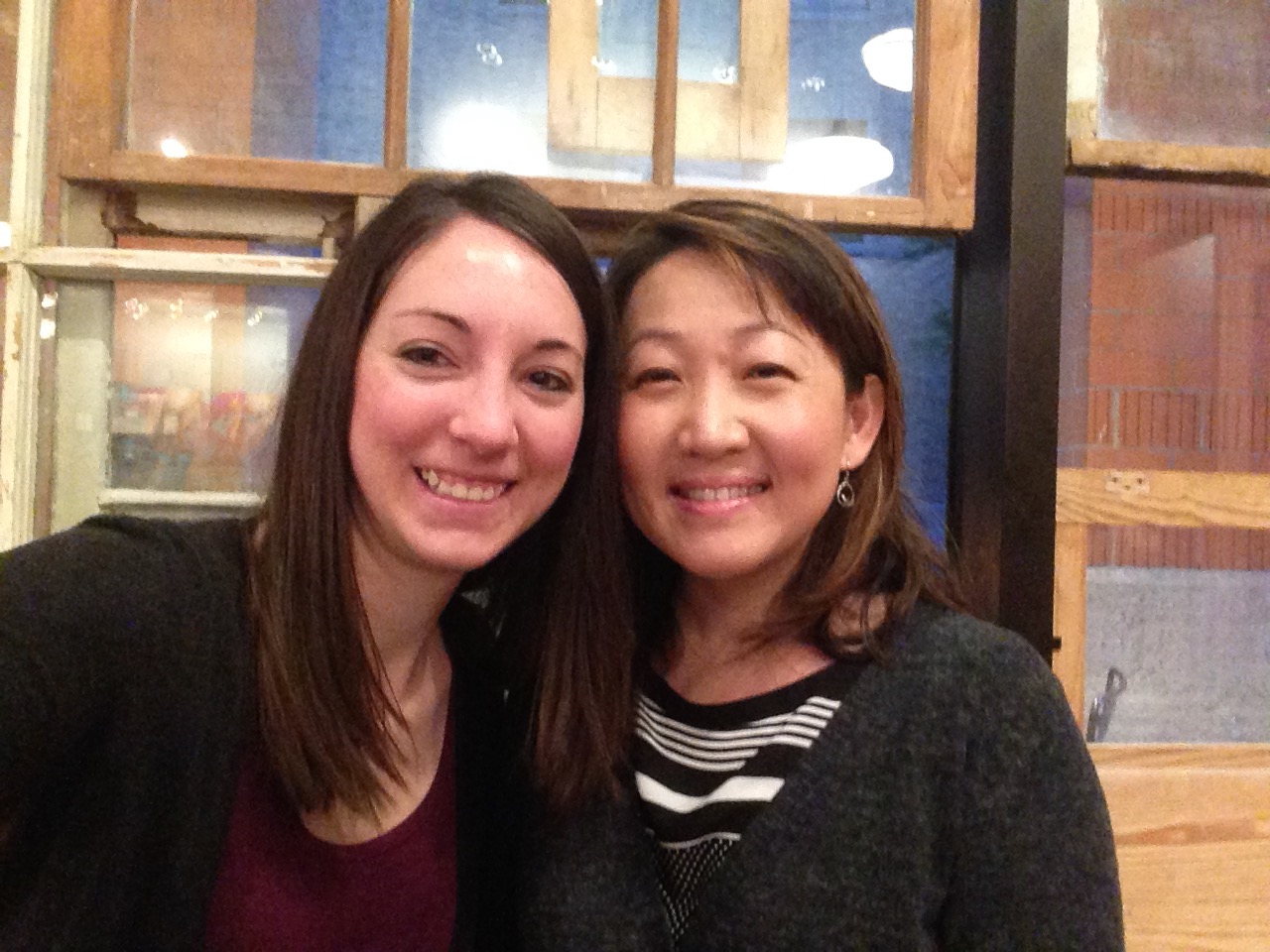
Love this post! I am a pianist/composer, and this is definitely a great beginning for anyone who’s new to composition 🙂